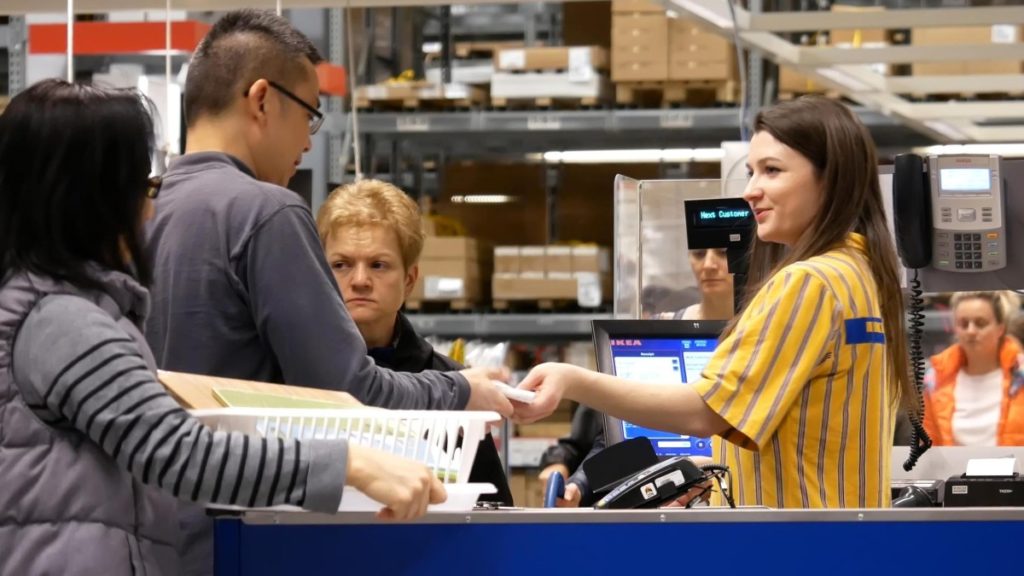Many Magento retailers selling durable products like electronics want to offer trade-in service to keep regular customers.
But building your own trade-in system is no joke.
Your choice for trade-in channels will require different technical solutions.
For instance, Apple offers trade-in service both online and in-store. On the other hand, GAME only operates its trade-in service through physical stores, while Navman only allows GPS device trade-in online.
So, as a Magento retailer, which channel should you choose to run trade-ins? And most importantly, how can you get the best technical solutions to make your dream program possible?
Keep reading to find the answers!
1. Online Trade-ins = Recommerce System
Product assessment tool and online purchase flow
Recommerce is a combination of sustainability and e-commerce.
In the case of recommerce, your customers can actually know the value of their old gears by using an assessment tool.
The process is pretty simple for customers:
Step 1: Sellers go to the trade-in page on the website and fill in the specifications of their old device. The system enables your customers to select a product or model from a list of eligible buyback/trade-ins.
Step 2: The customer answers some questions about the condition of the items. They can accept a lower price or trade it for free for retailers.
Step 3: The system will calculate the price based on the options the seller has chosen.
If the seller approves the final price, an order will be issued and ready to ship to the stores.
Step 4: The seller ships the item themselves or uses a free shipping label from the retailer. Once the store staff has received the product, they will review the gadget.
If the product fits the description, the staff can submit payment for the product. Otherwise, the item is shipped back to the customer.
You can set up to send email notifications about the status of the seller’s trade-in request.
Step 5: Staff will add points or credits to the customer’s account if the trade-in is approved.
The concept and strategy might vary from one company to another. You can choose to follow big brands or set up your own trade-in program.
Learn more about how to set up a trade-in program from scratch to increase traffic and sales here >
What happens in the back-end system
Split Inventory
Trade-in products are often managed separately from new products in the inventory. Trade-in items and buyback flow, shouldn’t interfere with your Magento store operation and its inventory. The trade-in system will categorize items based on the condition such as Like New, Good, or Acceptable.
In case you want to manage all products in one inventory, you need to set up mechanisms to distinguish old and new item in your back-end system.
Order Fulfillment
Admin should be able to track all buyback stages. The customer should also see updates in their account and get email notification about the changes. Here’s a list of sample statuses:
- Waiting for reception: the customer has submitted the shipment, but the trade-in item hasn’t arrived.
- Received – the device has been received at the facility but hasn’t been reviewed.
- Under review – the device is being checked by your staff.
- Reviewed – the gadget that has been successfully checked and approved for purchase.
- Paid – the payment has been submitted to the customer.
- Needs to be returned – the product needs to be shipped back to the customer.
- Shipped to Customer – the device has been shipped back to the customer.
Solutions to implement Magento trade-in program
Magento is no doubt the No.1 e-Commerce platform to help your business expand without fear.
Thanks to its flexible capability with tons of advanced features, many big retailers choose Magento for their unique business needs.
Trade-in isn’t a core feature in any Magento edition. You can consider the following solutions:
1. Use a third-party extension, such as Buy back Extension for Magento from Ikantam.
2. Hire a developer to build a new trade-in feature.
2. In-store Trade-in with Magento-native POS

Unlike online trade-in flow, offline trade-ins are often more simple. Retailers can take advantage of their POS system to set up a purchase order feature.
In-store Trade-in Flow
A typical trade-in service in offline channels has 3 steps:
Step 1: Consumer visits physical stores and turns in their used products.
Step 2: After checking and testing the returned products, the sales staff can offer consumers some special discounts, reward points, or gift card which can be used in their future purchases. The staff can determine purchase value based on the product’s “cost”, defined in Magento.
Step 3: Staff will create buy-back order in the system (via POS). Then they can update stock resell the product online or offline.
Offline trade-in solution on Magento-native POS
If you choose to perform your trade-in programs at the offline sales channel, a tailored function on Magento-native POS can be a great choice.
We offer customization on our Magestore POS with 3 outstanding trade-in features:
- A separate view on POS for purchasing used items from customers. You can switch between this and the normal POS checkout view easily.
- Items in this Purchase View will have different prices based on the Cost Attribute configured in Back-end.
- A category in Back-end listing all Purchases for Admin to manage.
A separated view on POS for taking used products from customers can be like this:
- Prices of items in Purchase View will change to Cost, instead of Normal Prices.
- The POS also has hold order function which helps you to put the purchase order on-hold while continuing to check out other orders.
Benefits of in-store Trade-in with Magento POS
- Cashier can purchase sold items easily on POS at the cost smaller than the selling price.
- Purchase information will display on the receipt.
- The quantity of purchased items is updated on POS and Back-end in real time.
- You can add and record notes in POS and Backend.
- Purchase details (Seller Info, Product, Note, and Date) are available on POS and in Magento Back-end.
- Store Owner can manage (filter/search/sort) purchased items from customers similar to Magento’s purchase order function.
3. Online-to-Offline Trade-in Programs
If you’re using an omnichannel or ERP system that connects online and offline sales channel, your trade-in items will be updated in the inventory. You can sell them along with the new products on both channels.
Technical solution
- Combine the two solutions above => Magento website + Magento-native POS for trade-in solution. Stock will be updated and centralized.
- Integrate with your reward program so customers can be redeemed online and offline for the next purchase.
Choose the one that suits you
Depending on your capability and business model, retailers can consider which trade-in system is best:
- Only offline channel (Magento-native POS)
- Only online channel (Magento site)
- Or double channels.
Some criteria to consider:
- Your products range: Not every item in your store can be traded-in. Each device category should have its own program, and you can choose whether you’d like to perform the trade-in online or in-store.
- Time and money to build tech solution on Magento: Setting up an online trade-in system might cost you more than an offline one because you’re building a system to evaluate products instead of a human being.
- Convenience for customers: Know your customer’s needs. Understand which sales channels would be better for them.
Conclusion
Trade-in with Magento will be easier if you know how to leverage tech solution for each sales channel: online, offline, or double channels. Each has its own advantages and bring potential benefits for you as a retailer and for customers.
By utilizing available Magento system and customizing new features, your trade-in strategies will work best for your unique needs.





2 Comments
Hey Kate
Great article, Really useful information Magento Online or Offline.
Thanks a lot!
Very Interesting things conver-up in the article, It will help you select the best Magento suite as per your need.